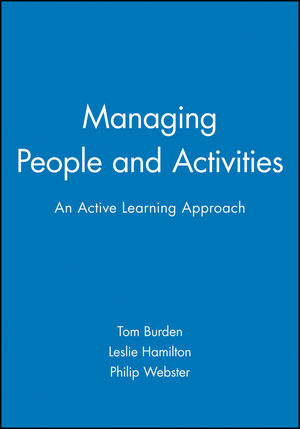Managing People and Activities: An Active Learning ApproachISBN: 978-0-631-19674-7
Paperback
300 pages
October 1995, Wiley-Blackwell
 |
||||||
Section I: Managing People:.
Part I:.
1. Management and leadership.
2. Management.
3. Leadership.
4. Categories of management style.
Part II:.
5. The culture of organisations.
6. Culture.
7. Power.
8. Politics.
9. Values and belief.
10. Ideologies.
11. Social influences.
Part III:.
12. Organisational development.
13. Stages in organisational development.
14. Future trends.
15. Team-based organisations.
Part IV:.
16. Individual and interpersonal behaviour.
17. Motivation.
18. Personality.
19. Perception.
20. Role theory and conflict.
21. Organisational issues.
Part V:.
22. Teams.
23. Teams or groups?.
24. Group processes.
25. Stages in the development of teams.
26. Characteristics of teams.
27. Team composition.
28. Conflict resolution.
29. Meetings as aids to decision making.
Part VI:.
30. Performance at work.
31. Identifying training needs.
32. Providing training.
33. Reviewing training activities.
34. Individual performance reviews.
35. Discipline and grievance.
36. Support strategies.
Section II: Managing Activities:.
Part I: .
37. Work planning and organisation.
38. Strategies and plans.
39. Planning tools.
40. Effectiveness and efficiency measures.
41. Organisational analysis techniques.
42. Method study.
Part II:.
43. Communications.
44. Giving orders.
45. Instruction.
46. Training and development styles.
47. Team briefing.
48. Reports.
49. Presentations.
Part III:.
50. Identifying constraints and meeting objectives.
51. External influences.
52. Regulatory controls.
53. Negotiating.
54. Managerial roles.
55. Co-ordinating activities.
Part IV:.
56. Reviewing and monitoring.
57. Establishing performance standards.
58. Reviewing performance standards.
59. Competencies.
60. Value analysis.
61. Auditing.
62. Systems analysis.
63. The impact of new technology.



